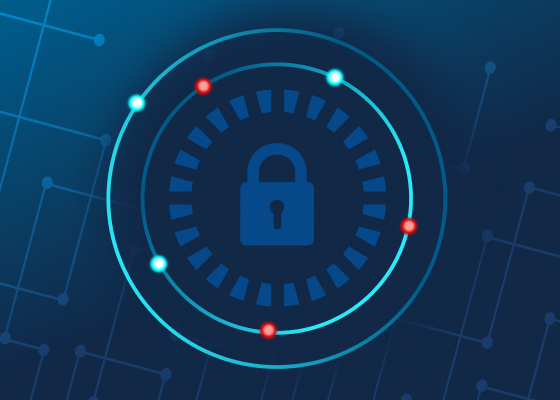Data Exfiltration
What Is Data Exfiltration?
Data exfiltration is the unauthorized extraction of data from a computer or network. It occurs when a user (or attacker) gains access to sensitive information and transfers it to an external location accidentally or with malicious intent. Data susceptible to exfiltration includes personal data, intellectual property, customer information, trade secrets, financial records, and other valuable information that could be exploited.

Essentially, data exfiltration is a form of security breach where information is illicitly or accidentally copied, transferred, or retrieved without authorization. Effective countermeasures to prevent the exfiltration of data require a combination of robust cybersecurity measures such as access controls, intrusion detection systems, vigilant monitoring, and awareness of potential threats.
How Data Exfiltration Occurs
Data exfiltration can occur through various methods and techniques that leverage both technical vulnerabilities and human fallibilities. Understanding the common methods by which data exfiltration occurs facilitates the development of effective prevention and detection strategies. Several approaches used for data exfiltration include the following.
Advanced persistent threats (APTs)
This approach to exfiltrate data is based on sophisticated, sustained cyberattacks in which an intruder gains access to a network and remains undetected for an extended period before extracting data.
Accidental sharing
While it does not occur as often as malicious attempts, data exfiltration can be the result of human error, such as sending sensitive information to the wrong email address or misconfiguring system permissions.
Cloud storage misconfigurations
Incorrect configurations in cloud services and storage can inadvertently expose sensitive data, making it accessible to unauthorized users or exfiltration. This is most often the result of an oversight or misunderstanding of cloud security protocols.
Data transfer tools
Without proper monitoring or control, simple tools, such as FTP, email, or even web-based file-sharing services, can be used to exfiltrate data.
Endpoint data exfiltration
Individual devices, such as laptops or mobile phones, can be exploited to illegally extract sensitive data stored locally. These devices can also serve as a point of entry to take advantage of vulnerabilities in connected networks.
Insider threats
Disgruntled employees or other users inside an organization with malicious intent can exploit their authorized access to exfiltrate data. Users with authorized access can intentionally or unintentionally leak data for a variety of reasons ranging from a desire to do harm or for financial motivations.
Malware-based data exfiltration
Cyber attackers commonly deploy malware such as keyloggers, trojans, ransomware, and spyware to infiltrate systems, remain undetected, and establish remote access, sometimes creating backdoors to be used at a later date. Once inside, this malicious code can be used to exfiltrate sensitive data without the users’ knowledge.
Network-based data exfiltration
Malicious actors exploit vulnerabilities in network infrastructure to gain unauthorized access and exfiltrate data. This can be misconfigured firewalls and routers, or just poorly secured networks that enable the exfiltration of data that is intercepted over unencrypted connections.
Phishing and social engineering
Cyber attackers trick users into clicking a malicious link, providing sensitive information, or enabling access to a system with sensitive data to facilitate the exfiltration of data. Malicious links usually install data exfiltration software, grant remote access, or create backdoors to enable data exfiltration.
Physical theft or loss
The exfiltration of data can be the result of the physical theft or loss of devices such as laptops, hard drives, or mobile devices. Without adequate security measures, such as encryption, these devices can be a vector for data exfiltration.
Types of Data Exfiltration
The exfiltration of data can be done in many ways. Several of the approaches taken for data exfiltration include the following.
- Accidental data exfiltration—unintentional, non-malicious data leaks, usually attributed to an error or oversight
- Automated exfiltration—data transfers executed automatically using malicious software to extract and transmit data from a compromised system
- Command and control—a communication channel created by attackers between the compromised system and a remote server to send data without detection
- DNS exfiltration—DNS requests and responses are manipulated to encode and transmit sensitive data
- Email-based exfiltration—data transfers are done using simple email attachments, blending in with legitimate traffic
- Steganography—sensitive data is hidden in images, audio files, or other digital media to evade detection during exfiltration
Ways to Detect Data Exfiltration
Detecting and preventing data exfiltration requires a proactive approach that leverages a combination of security measures, including technology, user awareness, and robust security protocols. The following are several security controls that are proven to detect and prevent the exfiltration of data effectively.
Anomaly detection systems
Advanced anomaly detection systems, often powered by artificial intelligence (AI) and machine learning (ML), are very effective for identifying behavior that deviates from users’ normal user behavior and network activity, which is an indicator of a malicious user and potentially a precursor for data exfiltration.
Data loss prevention (DLP) systems
DLP systems monitor sensitive information and can be configured to block unauthorized attempts to exfiltrate sensitive data (e.g., via email, cloud services, or file transfer tools such as FTP).
Employee training and awareness
Incorporating the issue of data exfiltration into users’ security awareness training helps them understand the risks of data exfiltration, the signs that indicate a threat and best practices for preventing unauthorized data transfers. With people being a weak point in an organization’s attack surface, this can help mitigate the risk associated with them.
Endpoint security
Installing endpoint security software on endpoints (e.g., computers, mobile devices, and servers) prevents unauthorized access to and the exfiltration of data by detecting unauthorized activity and preventing transfers.
Network monitoring
Network monitoring tools that can continuously analyze network traffic patterns, detect anomalies, and alert administrators of suspicious activity that could be an indicator of unauthorized data exfiltration.
Regular security audits and assessments
Conducting periodic reviews of the organization’s security posture and digging into log files can identify vulnerabilities or malware that could be exploited for data exfiltration.
User and entity behavior analytics (UEBA)
UEBA tools establish baselines for the normal activity of people and systems. By monitoring activity and comparing it to this baseline, UEBA systems are able to identify suspicious activity that could indicate attempts to exfiltrate data.
Safeguard Digital Assets from Data Exfiltration
Of the many cyber risks that organizations face, data exfiltration poses a significant threat, but it can be prevented. Understanding the ways that data exfiltration can occur helps teams implement effective detection and prevention measures to safeguard digital assets. By staying knowledgeable about the methods used for the exfiltration of data, teams can protect sensitive data and mitigate the risks associated with data exfiltration.
Egnyte has experts ready to answer your questions. For more than a decade, Egnyte has helped more than 17,000+ customers with millions of users worldwide.
Last Updated: 13th May, 2024


